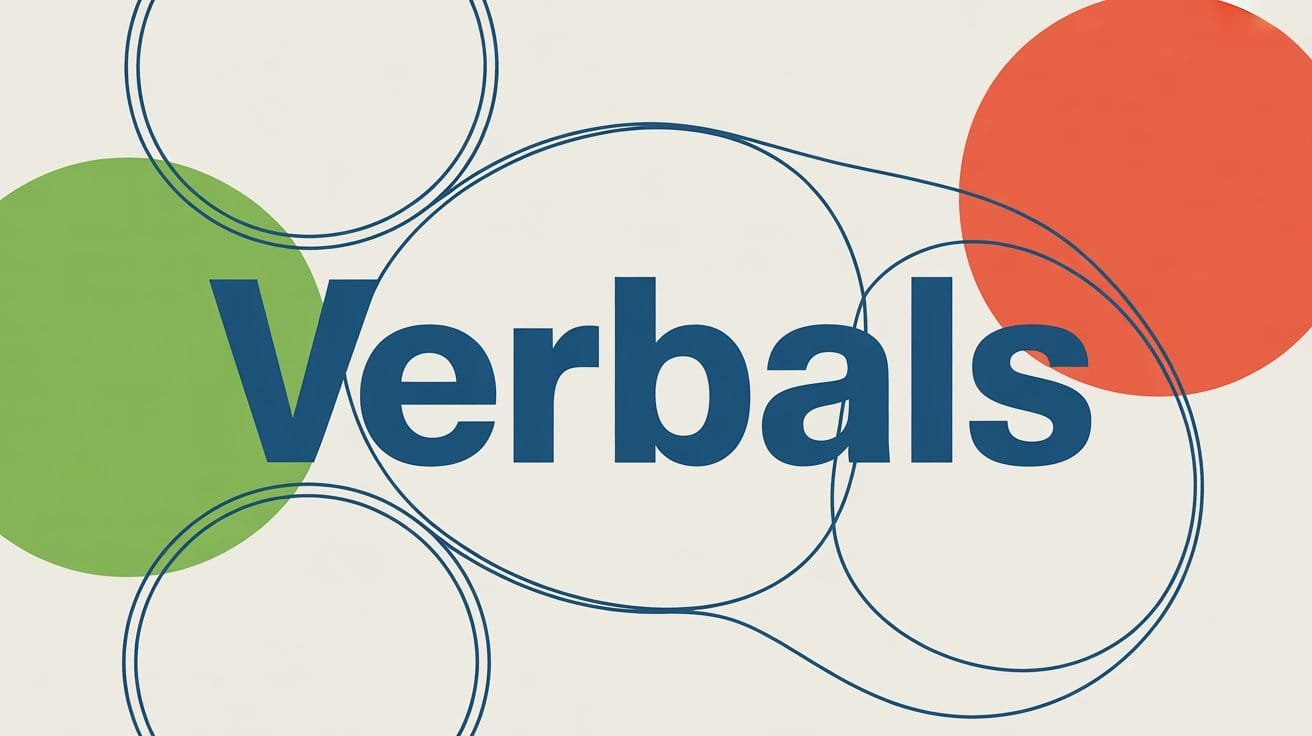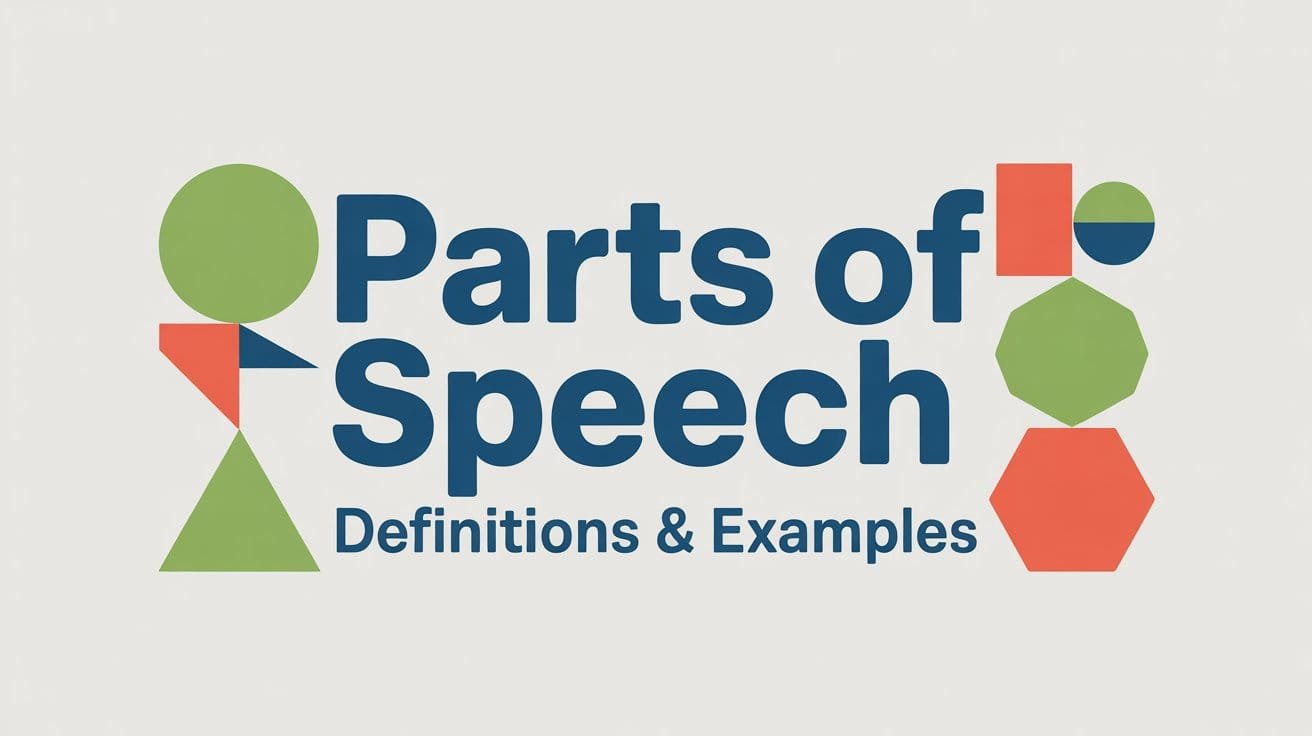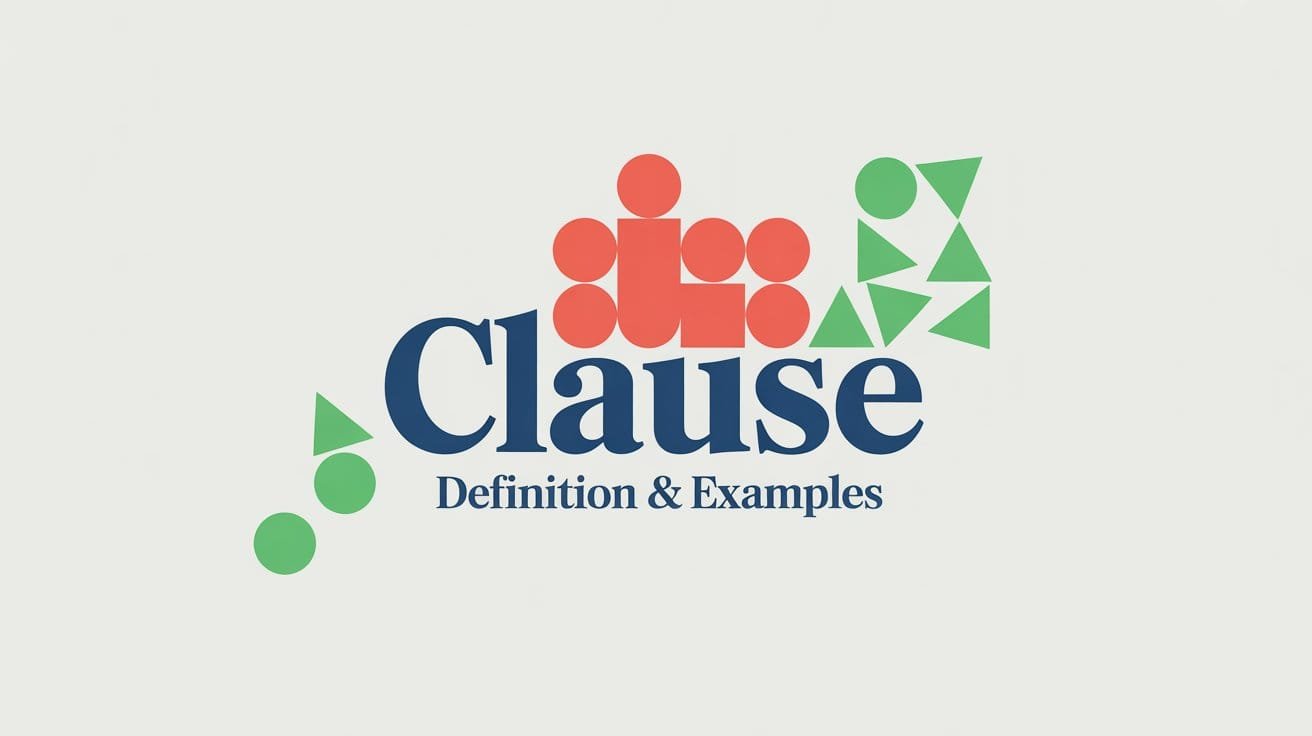In English grammar, not every verb acts like a verb. Sometimes, verbs step outside their usual role and function as nouns, adjectives, or adverbs. These are called verbals—words that look like verbs but don’t act as the main verb in a sentence.
Instead, they take on different grammatical jobs, often adding variety and clarity to writing. For example, in the sentence Swimming helps me relax, the word swimming looks like a verb but acts as the subject (a noun role).
Understanding how verbals work can help you write more precisely and recognize sentence structures more easily. In this guide, we’ll explain each type of verbal, show how it’s used, and explain how it differs from regular verbs.
What Are Verbals in English Grammar?
Verbals are words that are formed from verbs but do not function as the main verbs in a sentence. Instead, they act as nouns, adjectives, or adverbs, depending on the type.
Even though verbals come from verbs, they do not show tense or serve as the predicate of the sentence.
Examples:
- Jogging is my favorite hobby. (noun)
- The broken window needs repair. (adjective)
- I want to learn Spanish. (noun)
Types of Verbals in English
In English grammar, there are three main types of verbals, each formed from a verb but used in different ways: gerunds, infinitives, and participles. Understanding how they work can help improve both clarity and variety in your writing.
Gerunds
A gerund is the –ing form of a verb that functions as a noun. It can act as the subject, object, or complement in a sentence.
Examples:
- Running keeps me energized in the morning.
(Subject of the sentence) - She enjoys painting landscapes in her free time.
(Direct object of the verb “enjoys”) - His favorite activity is cycling.
(Subject complement after “is”)
In all of these, the gerund acts like a noun even though it comes from a verb.
Infinitives
An infinitive is the base form of a verb usually preceded by to (e.g., to write, to learn). It can function as a noun, adjective, or adverb depending on where it appears in the sentence.
Examples:
- She hopes to travel next summer.
(Noun – object of the verb “hopes”) - He bought a book to improve his grammar.
(Adverb – explains why he bought the book) - That’s a class to avoid if you dislike public speaking.
(Adjective – modifies the noun “class”)
Infinitives often show intention, purpose, or preference.
Participles
A participle is a verb form used as an adjective to describe nouns. There are two kinds:
- Present participles: end in –ing (e.g., glowing, running)
- Past participles: often end in –ed, –en, –d, –t, or –n (e.g., broken, burnt, chosen)
Examples:
- The laughing children ran through the park.
(Present participle modifying “children”) - The abandoned house looked eerie at night.
(Past participle modifying “house”)
Participles help add description and detail, making writing more vivid.
Verbals vs. Finite Verbs
Understanding the difference between verbals and finite verbs helps avoid confusion in identifying parts of a sentence.
What’s the difference?
- Finite Verbs act as the main verbs of a sentence. They show tense, agree with the subject, and express a complete action or state.
- Verbals look like verbs but do not function as the main verb in the sentence. They do not show tense or subject agreement. Instead, they act as nouns, adjectives, or adverbs.
Example Comparison
Finite verb: Lena sings beautifully.
(sings is the main verb – present tense, third person singular.)
Verbal: Singing every morning helps her relax.
(Singing is a gerund – acts as the subject, not a main verb.)
Finite verb: He wrote a letter yesterday.
(wrote is a finite verb – past tense.)
Verbal: The written note surprised everyone.
(written is a past participle used as an adjective.)
In short, finite verbs carry the action of the sentence, while verbals describe, name, or modify without acting as the sentence’s main verb.
Why Verbals Matter
Verbals are essential in English grammar because they allow for more variety and flexibility in sentence structure. By using verbals, writers and speakers can:
- Condense ideas into fewer words
Example: Instead of saying “She likes when she dances,” you can say “She likes dancing.” - Add descriptive detail
Example: “The girl wearing a red hat smiled.”
(wearing is a participle that adds detail to girl) - Create smoother sentence flow
Verbals help avoid choppy or repetitive sentence patterns by embedding actions or descriptions into phrases. - Use verbs in non-finite roles
This means verbs can act as subjects, objects, modifiers, and more—broadening how we express ideas.
In writing, recognizing verbals helps avoid errors in subject-verb agreement, punctuation, and clarity. For learners, understanding verbals builds a stronger foundation for mastering complex sentence structures.
Common Mistakes with Verbals and Tips
Verbals can make sentences more interesting, but they also lead to confusion if not used correctly. Below are common mistakes to watch for, and tips to fix them.
Misplaced or Dangling Modifiers (Participles)
Participles help add detail and description, but they must be placed correctly. If not, they can lead to a dangling modifier, where it’s unclear what the participial phrase is describing.
Mistake: Walking to school, the rain started pouring.
(Who was walking? This sentence makes it sound like the rain was walking.)
Tip: Always place participial phrases near the noun they describe.
✔ Walking to school, Mia noticed the rain starting to pour.
Using Gerunds When Infinitives Sound More Natural
Mistake: He enjoys to swim.
(Not natural—“to swim” is an infinitive, but here a gerund fits better.)
Tip: Some verbs prefer gerunds, others prefer infinitives.
✔ He enjoys swimming.
✔ He wants to swim.
Punctuation Errors
Mistake: To win she practiced daily.
(Feels rushed—no pause.)
Tip: Use a comma after introductory verbal phrases.
✔ To win, she practiced daily.
Confusing Verbals with Main Verbs
Mistake: Running through the park every morning.
(This is a fragment—there’s no main verb.)
Tip: Verbals cannot stand alone as the main verb of a sentence.
✔ She enjoys running through the park every morning.
FAQs About Verbals in Grammar
What is verbal in grammar?
A verbal is a word formed from a verb that functions as a noun, adjective, or adverb. The three main types are gerunds, infinitives, and participles.
Are verbals the same as verbs?
No. While verbals come from verbs, they do not act as the main verb in a sentence. They take on other roles like noun or modifier.
Can a sentence contain both a verbal and a main verb?
Yes. Many sentences include both. For example: “She loves to paint in her free time.” (“to paint” is an infinitive verbal; “loves” is the main verb.)
What’s the difference between a verbal and a verbal phrase?
A verbal is a single word. A verbal phrase includes the verbal and any objects, modifiers, or complements attached to it. Example: “Swimming across the lake” is a verbal phrase.
Do verbals change tense like regular verbs?
Not exactly. Verbals reflect tense through their form, but they don’t change tense in the way main verbs do. For instance, participles can show time (e.g., eaten, eating), but gerunds and infinitives remain the same.
Can one word be both a gerund and a participle?
Yes, depending on its function in the sentence.
“Running helps me focus.” (gerund)
“The running water was cold.” (participle)
Are infinitives always “to + verb”?
Most of the time, yes. But sometimes the “to” is dropped in certain constructions—this is called the bare infinitive. Example: “Help me carry this.” (“carry” is the bare infinitive)



